Elberta Peach Tree
- June 21, 2023
- 1 comment

Common Name: Elberta Peach Tree
Botanical Name: Prunus persica ‘Elberta’
Family: Rosaceae
Plant Type: Deciduous fruit tree
If you’re a fan of delectable peaches, then the Elberta Peach tree (Prunus persica ‘Elberta’) is an excellent choice for your garden. This popular fruit-bearing tree is known for its juicy, flavorful peaches that delight taste buds and bring a touch of summer to your home. In this article, we’ll explore the fascinating characteristics, care tips, and interesting facts about the Elberta Peach tree.
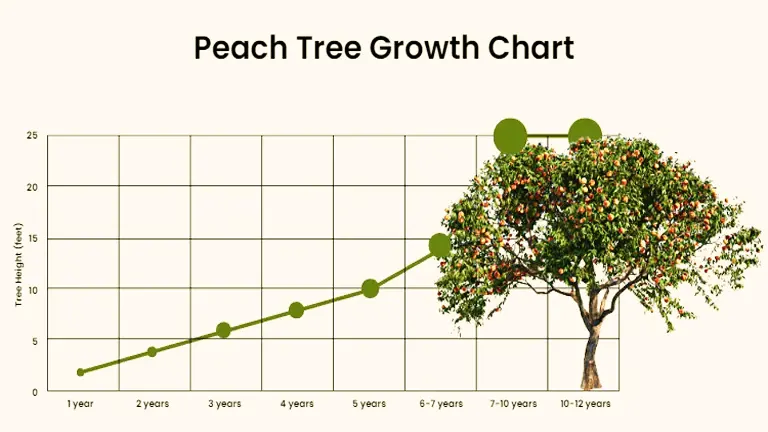
Mature Size and Growth Rate
Elberta Peach trees are medium to large-sized trees, typically reaching heights between 15 and 25 feet (4.5 to 7.5 meters) with spreads of 12 to 20 feet (3.5 to 6 meters). They have a moderately fast growth rate, providing you with beautiful foliage and abundant peaches within a few years.

Soil Type
These peach trees thrive in well-drained soils that are rich in organic matter. They can tolerate a range of soil types, including loam, clay, and sandy soils.
Soil Preference
Elberta Peach trees prefer slightly acidic to neutral soil, with a pH level between 6.0 and 7.0. Adequate soil moisture is essential for their healthy growth and fruit production.
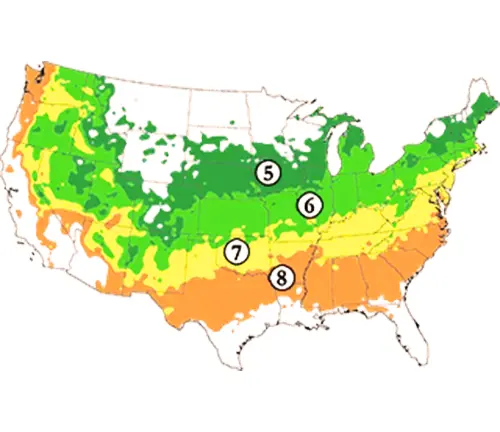
Hardiness Zones
The Elberta Peach tree is well-suited for growing in USDA hardiness zones 5 to 8. These zones cover a wide range of climates, including areas with moderate winters and warm summers.
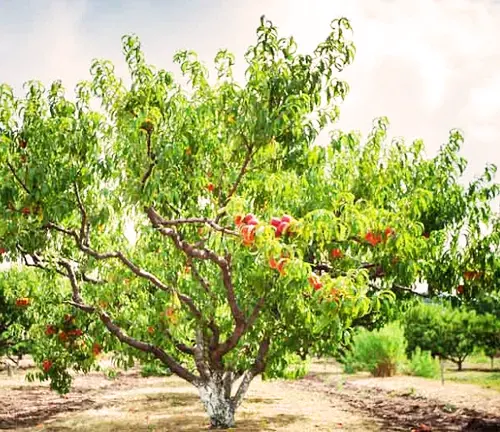
Sun Preference
Full sun exposure is vital for Elberta Peach trees to thrive. They require at least six to eight hours of direct sunlight each day to produce the best quality and quantity of fruit.

Attributes and Characteristics
This peach variety is known for its large, yellow-fleshed fruits with a bright red blush covering a significant portion of the peach’s surface. The peaches are incredibly juicy, with a sweet, rich flavor that makes them perfect for eating fresh or using in various culinary creations, such as pies, preserves, and cobblers. The Elberta Peach tree produces abundant crops of peaches that ripen in mid to late summer, ensuring a bountiful harvest year after year.

Wildlife Value
The Elberta Peach tree offers wildlife value by attracting pollinators such as bees, which aid in the fertilization process. Additionally, the ripe peaches are a magnet for birds and small mammals, adding to the ecosystem diversity of your garden.
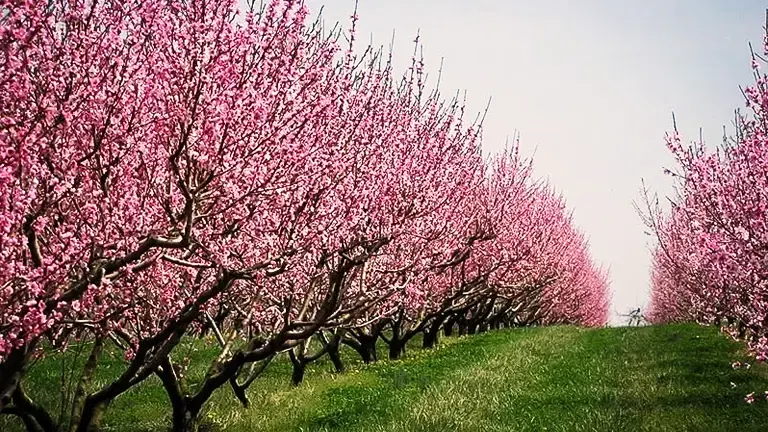
Care
To ensure optimal growth and fruit production, provide regular watering to keep the soil consistently moist but not waterlogged. Apply mulch around the base of the tree to conserve moisture and suppress weed growth. Fertilize with a balanced fruit tree fertilizer in early spring and prune during the dormant season to shape the tree, remove dead or diseased branches, and improve airflow.
Benefits
The Elberta Peach tree provides numerous benefits to gardeners and fruit enthusiasts. Beyond the mouthwatering peaches it produces, this tree enhances the aesthetic appeal of your garden with its showy pink blooms in spring. It also promotes biodiversity by attracting pollinators and other wildlife. Furthermore, growing your own peaches allows you to enjoy the taste of freshly harvested fruit and take pride in nurturing a tree that provides abundant rewards.
Invasive
The Elberta Peach tree is not considered invasive. However, as with any fruit tree, it’s important to prevent escaped seedlings from spreading in natural areas where they may outcompete native plants.
Lifespan
With proper care and maintenance, an Elberta Peach tree can live for approximately 15 to 20 years, although some trees have been known to thrive for longer periods.
Disadvantage
One potential disadvantage of the Elberta Peach tree is its susceptibility to certain pests and diseases. Regular monitoring and appropriate pest management practices can help mitigate these issues and ensure the tree’s health.
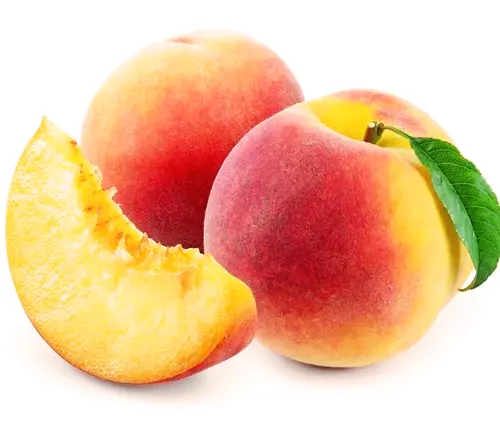
Edible or Not
The Elberta Peach tree produces highly edible fruits that are prized for their exceptional taste and texture. Whether eaten fresh or incorporated into various culinary delights, the peaches are a delightful treat for all.
Habitat Requirements
Elberta Peach trees prefer well-drained soil and require a sunny location to thrive. Adequate air circulation around the tree helps prevent diseases. They are commonly found in orchards, backyard gardens, and commercial peach farms.
Name Origin
The Elberta Peach tree was first discovered as a seedling in Marshallville, Georgia, by Samuel H. Rumph in the mid-19th century. It was named after his daughter, Elberta Rumph. The variety gained immense popularity due to its exceptional fruit quality and has since become a beloved classic.

Varieties
While the Elberta Peach tree is a specific cultivar, there are various other peach tree varieties available, each with its own unique characteristics and flavor profiles. Some popular peach varieties include Redhaven, Hale Haven, and Belle of Georgia, among others.
Pruning
Regular pruning is essential for maintaining the health and productivity of the Elberta Peach tree. Prune during the dormant season, typically in late winter or early spring, before new growth begins. Remove any dead, damaged, or crossing branches, and thin out the canopy to allow better light penetration and airflow.
Propagating
The Elberta Peach tree can be propagated through grafting or budding onto compatible rootstocks. Grafting is a common method used by growers to ensure the desired characteristics and quality of the fruit.
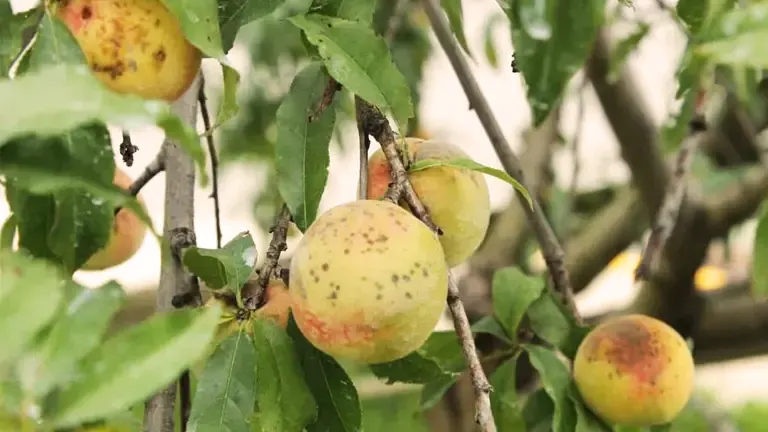
Common Pests & Diseases
Elberta Peach trees are susceptible to various pests and diseases, including peach leaf curl, brown rot, aphids, plum curculio, and oriental fruit moth. Regular monitoring, practicing good sanitation, and using appropriate pest management strategies can help prevent and control these issues.
Fun Facts:
- The Elberta Peach tree became the most widely planted peach variety in the United States during the late 19th and early 20th centuries.
- Elberta Peaches are often referred to as “the queen of peaches” due to their exceptional taste and versatility in culinary applications.
- The Elberta Peach tree was designated as the official tree of the state of Alabama in 1955, in recognition of its economic and cultural significance.
Frequently Asked Questions:
- Q: When is the best time to plant an Elberta Peach tree?
A: The best time to plant an Elberta Peach tree is in late winter or early spring when the tree is dormant, and the soil is workable. - Q: How long does it take for an Elberta Peach tree to bear fruit?
A: Elberta Peach trees typically begin to bear fruit within three to five years after planting, although the exact timing may vary depending on growing conditions and the size of the tree at the time of planting. - Q: Can I grow an Elberta Peach tree in a container?
A: While it’s possible to grow an Elberta Peach tree in a large container, it may pose challenges as the tree requires ample space for root development and may become too large for a container over time. It’s generally recommended to plant them in the ground for optimal growth and fruit production. - Q: How do I protect my Elberta Peach tree from pests and diseases?
A: Regular monitoring, practicing good sanitation, and implementing integrated pest management techniques are crucial for preventing and managing pests and diseases. This includes proper pruning, using insecticidal sprays when necessary, and removing any fallen fruits or diseased plant material to reduce the risk of infestations.
In conclusion, the Elberta Peach tree is a prized addition to any garden, offering sweet and juicy peaches, aesthetic beauty, and ecological benefits. By providing the right care and attention, you can enjoy the rewards of this delightful fruit tree for years to come.





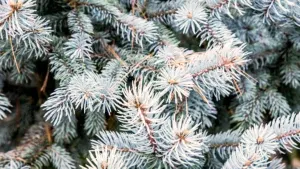
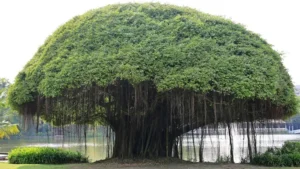

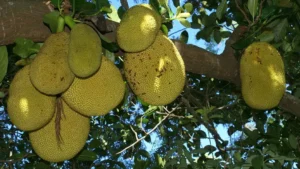


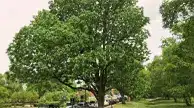


Is te Elberta Peach tree a hybrid?
Tom
June 22, 2023 12:14 am